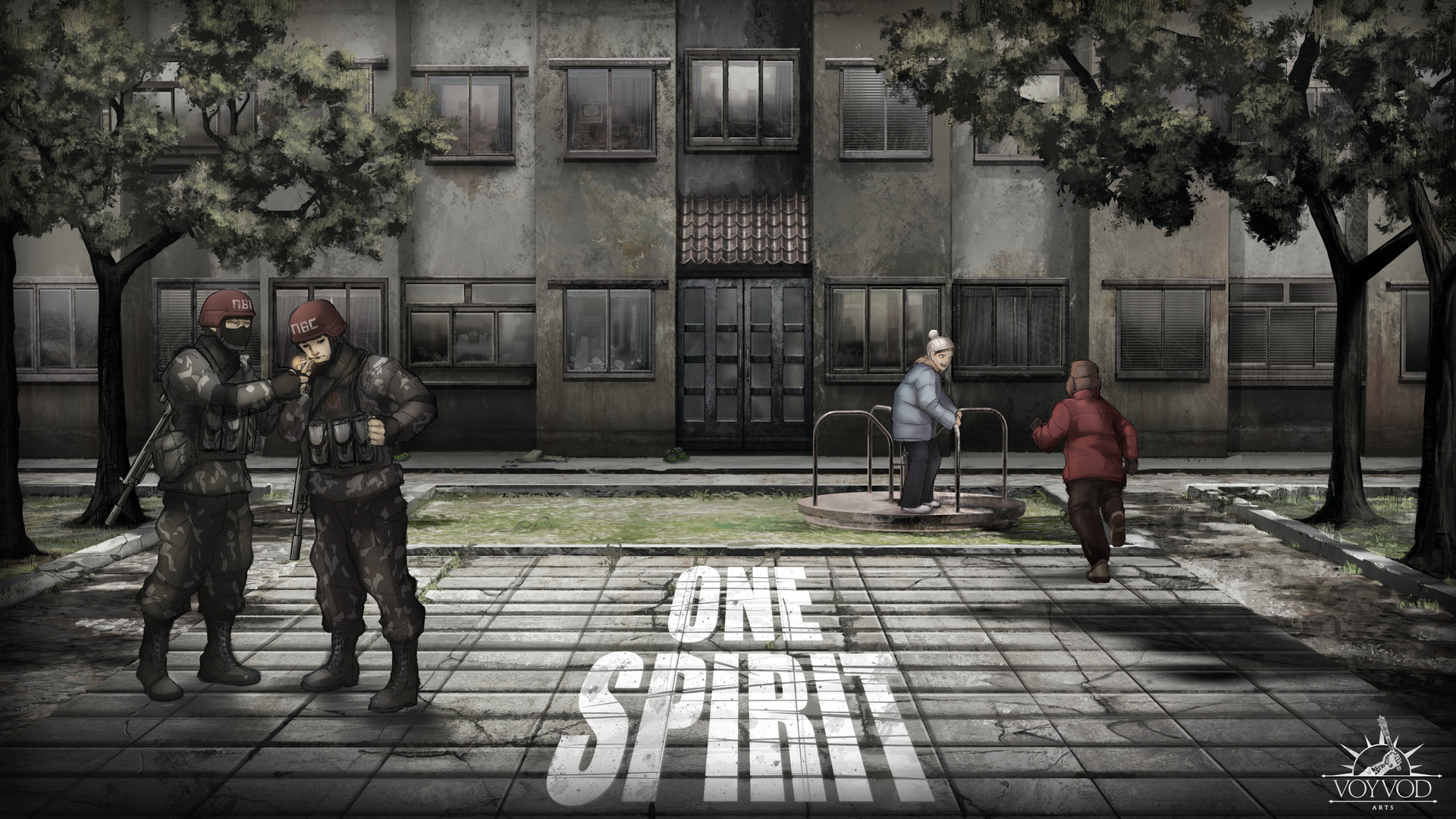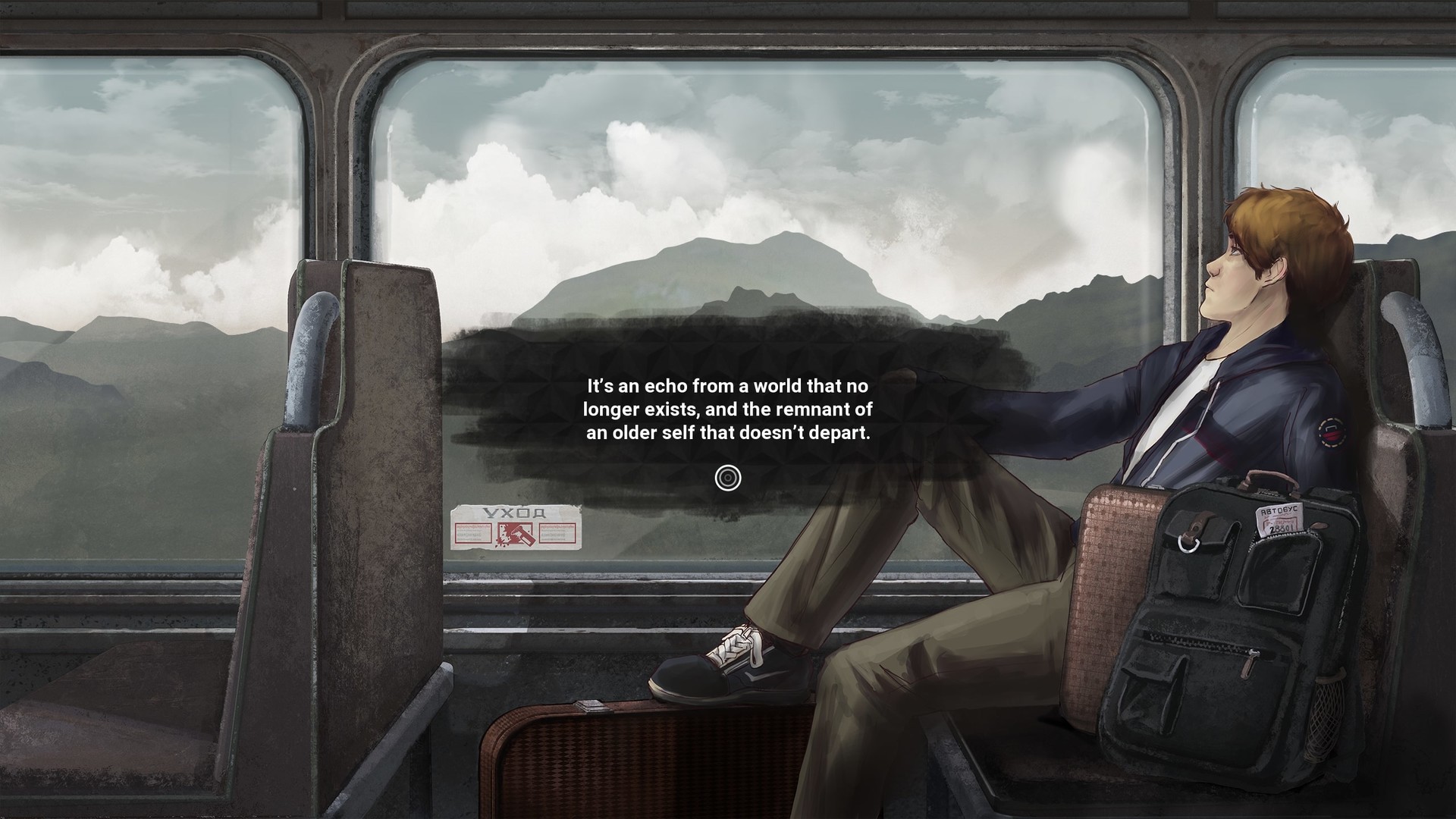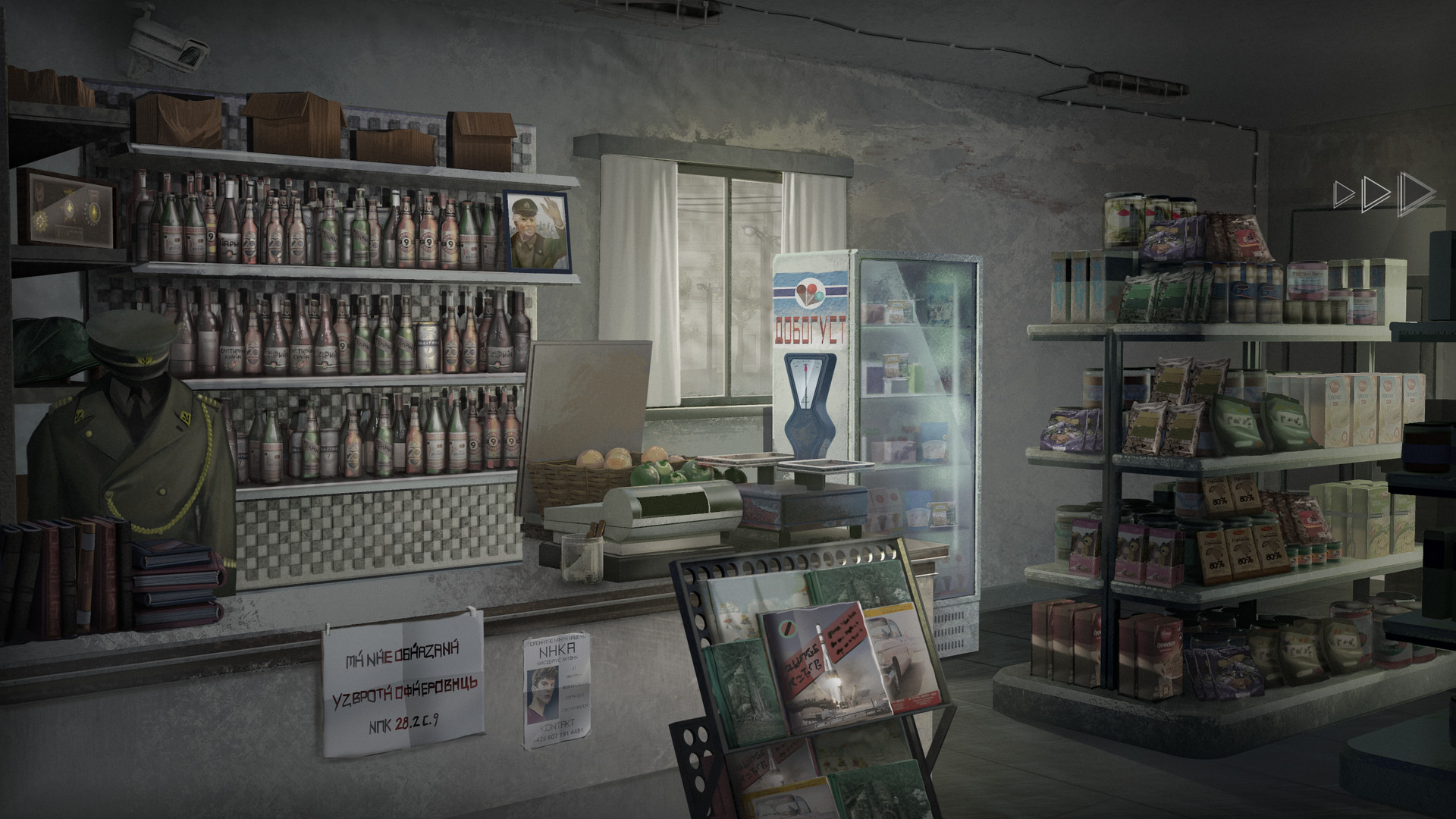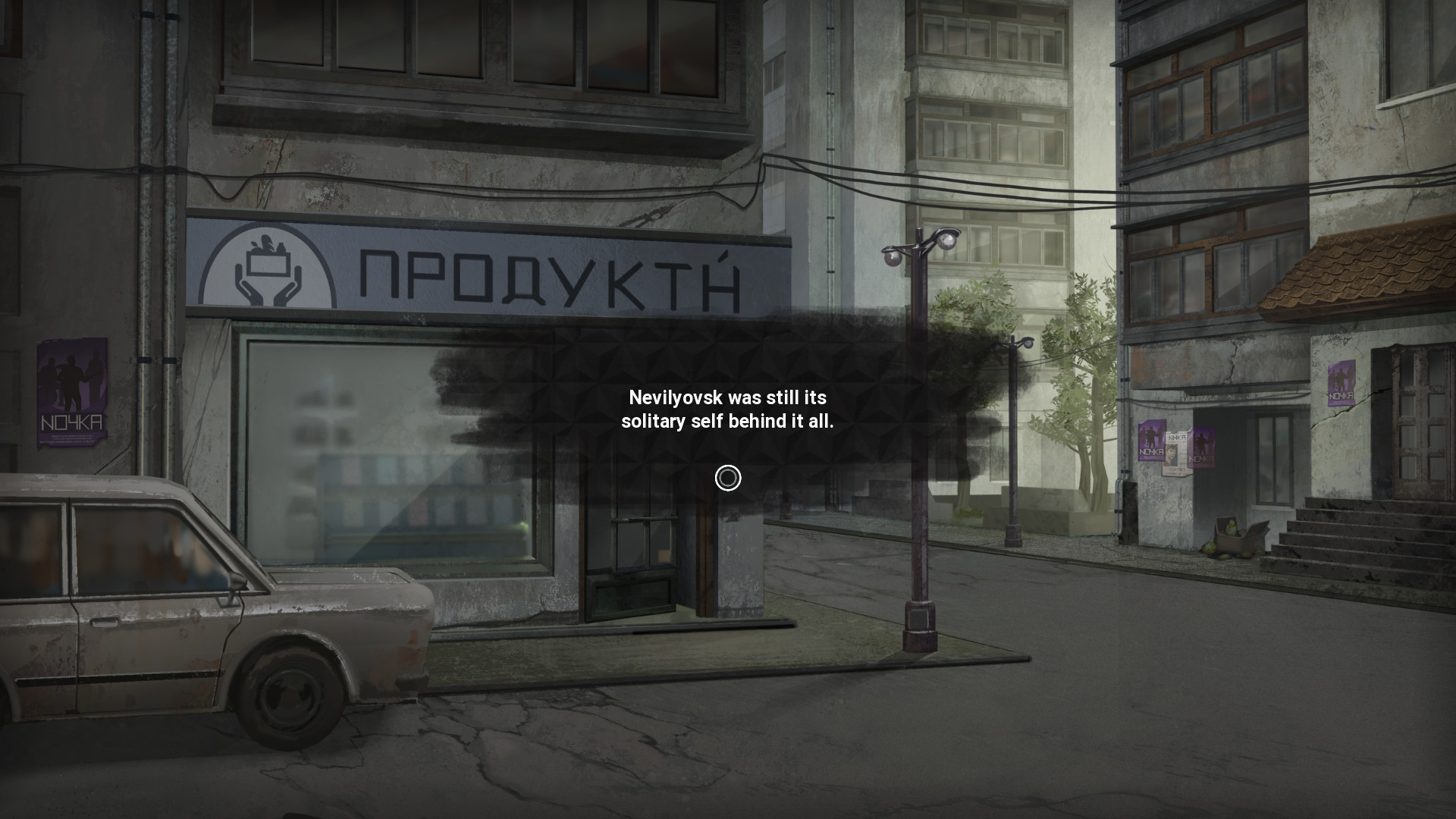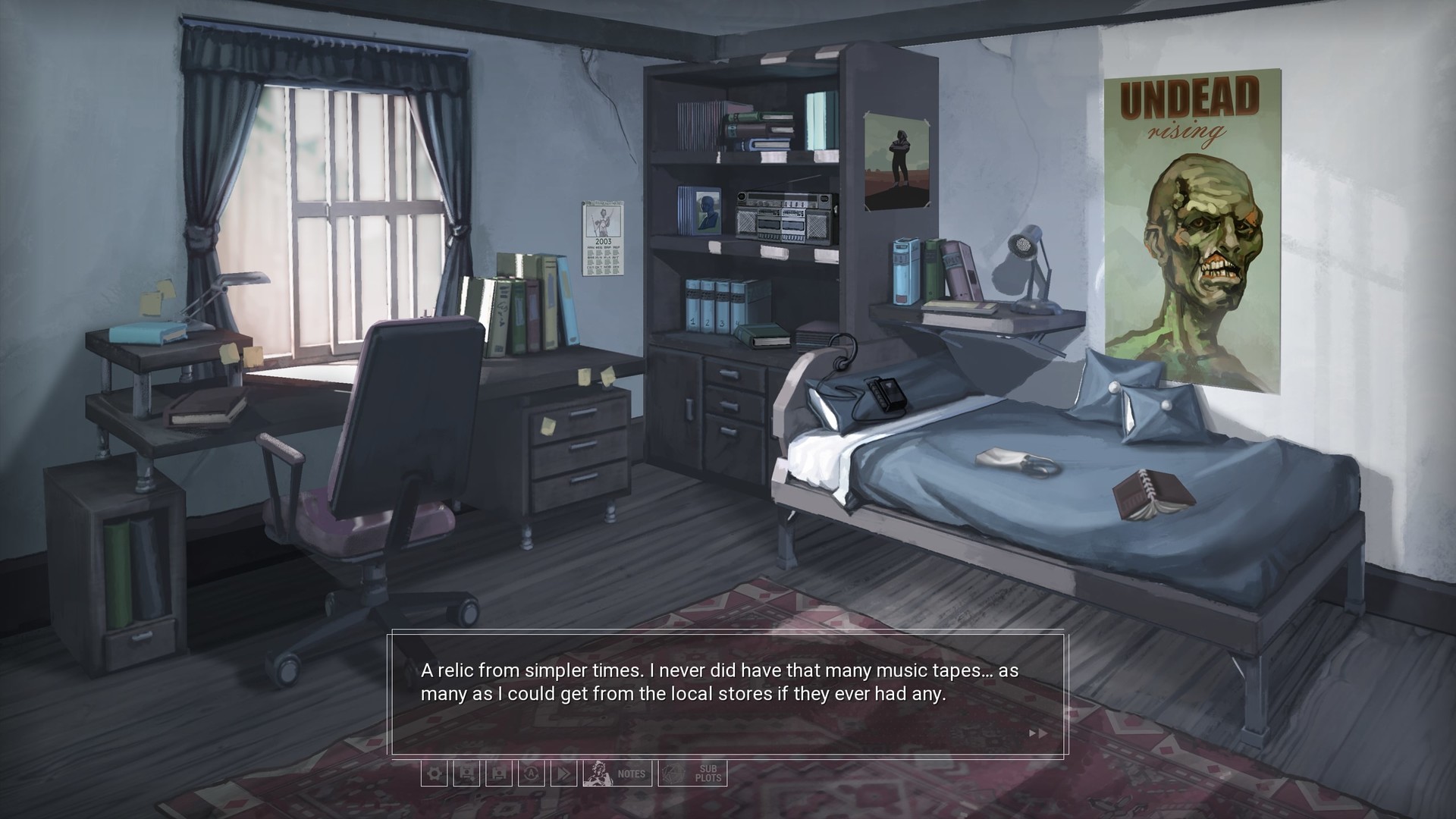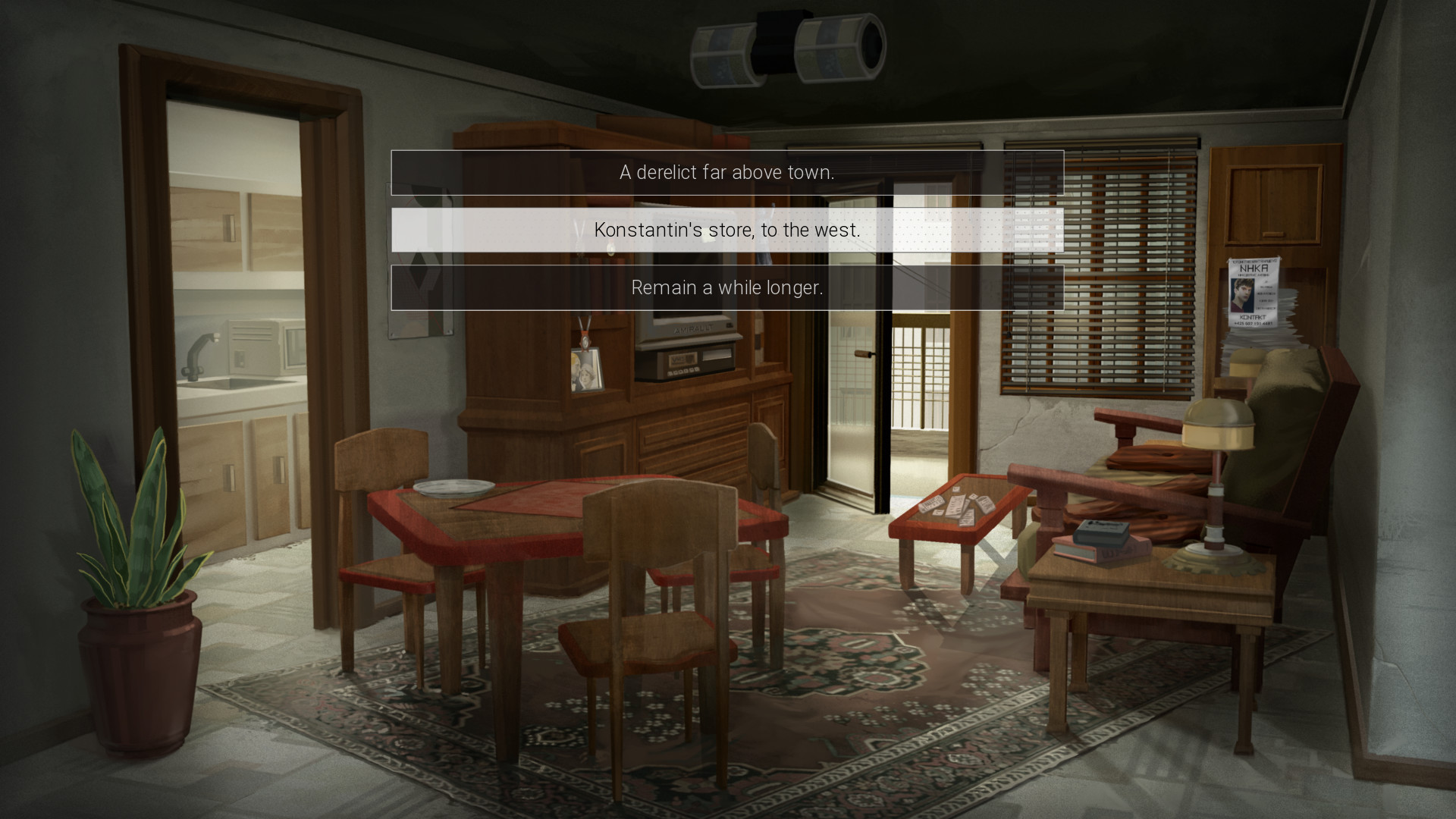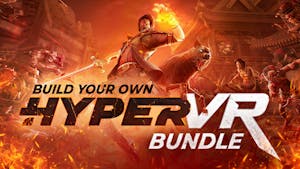
One Spirit is a coming-of-age visual novel set in an alternate timeline where the Cold War drags on into the 21st century. Exploring various political, cultural and philosophical themes, the game presents an engaging, thought-provoking thriller through the eyes of its everyday characters, their struggles and hopes.
In 2003, the Iron Curtain stands tall. The superpowers of the new age wage a silent war through the means of information, economy, culture and proxy. As the Cold War slows to a crawl, the Republic of Sysica, a Western satellite state in Eastern Europe, finds itself on the verge of political death as violence, misery and war loom over its head.
One Spirit follows Yuri Danilin, an 18-year-old young man disenchanted with life, as he returns to his modest hometown in Nevilyovsk, Eastern Sysica. Having failed in his studies at the capital, he reunites with his sister knowing their time apart has changed both permanently. When news of a known local activist disappearing spread through the town, Yuri soon finds himself at the center of a dangerous game of truths.
KEY FEATURES
- Uncover a deep and engaging story, set in an original world where the Iron Curtain hasn't fallen, inspired by real events and reflections on them: experience the bleak feel of a war too long fought.
- See the world through the eyes of an alienated youth — casual but complex personalities set in a path of self-discovery and self-affirmation in a world that has robbed them of a future.
- Delve into six different subplots branching from the main story.
- Every subplot has a unique dynamic you engage with by making choices, efforts and sacrifices. Subplots develop a wide variety of topics stemming from Yuri's fatal years of 2003 and 2004, from the intimacies of friendship to the secrecies of Sysica's ideological underground.
- Decide carefully how to spend your time in Nevilyovsk: days are a limited resource. Your priorities and preferences will increasingly mark your journey.
- Enjoy high choice responsiveness, as the game's slightest details react to your smallest choices.
- Explore over 30 different environments to reveal new details, points of view and events.
- Take part in a philosophical journey about human history, society, struggle and life, with roots in contemporary critical theory, psychoanalysis and existentialism, among other similar and dissident traditions.
- Dive into this grey world through a high-quality art style that evokes the melancholic, nostalgic feel of post-socialist Sysica.
- Explore hours upon hours of worldbuilding detail: a unique Slavic theme, a constructed language, a simulated history and a culture imagined from the ground up.
As we'd said in Devlog 2, we are rather skeptical about conceiving characters as static, perfectly planned models of imagination. While it is us authors, artists who are in ultimate control of them as they're delivered to an audience, the process they're created through can be far more chaotic, far less calculated.
Devlog 2 already explained we don't believe naturalist visuals are a necessary condition for realism. For this reason, we've considered it acceptable and as we'll see now, also desirable to use a style somewhere between Western and Eastern aesthetics to pay tribute to our own brand of realism.
The value of the casual and the banal
Our first condition, then, was to design our characters' visuals in a way that would retain an interesting, novel look while being closely tied to real expectations and body images; it was important to us that "stylization" did not imply detachment from the real world we intend to approach. We experimented quite a bit with many ideas, but eventually settled on this middle ground insofar as it provided the best balance for our vision and, also, our complementary assets (in all visual novels, sprites must be consonant with backgrounds).
Secondly, we wanted to distance ourselves from the Oriental conventions that we feel have impoverished the VN genre for far too long. There's no doubt there's power to make animanga aesthetics deeply interesting; and, even if there wasn't, they could at least support a meaningful theme. In this sense, that's the very reason we find works with great (visual) aesthetics and poor thematic or narrative architecture, and other works with shockingly novel stories with a rather generic art input. Visual novels have been moving away from the Oriental tradition both in theme and aesthetics, but one still sees them stumbling: despite unprecedented power to innovate, the genre we live in takes comfort in repeating the same creative tropes, conventions, means and ends, no matter whether they can be labelled "Eastern" or "Western" in any sense.

We chose to follow the type of Western aesthetic that does pay tribute to Eastern looks to, at least superficially, step out of line a bit: after all, to think unique stories can't lurk behind generic visual direction is prejudice, but that won't stop it from being frequently true. To create that middle ground between (conventional) West and East was to signal our intent to diverge far beyond that point as well. We were especially playful about it: the sprites were, in fact, produced by an artist who largely works animanga.
Characters are presented, at all times, in casual wear, with sober, tranquil expressions; exaggerated poses, as much as exaggerated actions or comments altogether, are thrown out in favour of more relaxed, banal ways of presenting themselves. No vivid colours, in line with the world's decadent feel; no extravagant clothing, in line with its popular, banal environments. No ideal body proportions, no overly elaborate looks: everyday genetics are more chaotic, and everyday lives hardly touch make-up. Peculiarities, yes; eccentricities, no. People, yes; tokens, no.
We were once told that one of them looked "non-different enough that you could see them in the street". It is exactly what we enjoy. Surely there's something to say about adding unique elements, ranging from actual objects (clothes, wear) and expressions (emotional profile) to more indirect queues of character (colour palette). We don't forget characters aren't meant to be "casual" to the point of "bland". But, retaining the idea that they're "just people being people" is central. It is the root of everything this game is.

Therefore, our driving principle has been to assimilate how characters are presented on the screen to how real people are met in real life: often through a casual, indistinct introduction, that is completed after slowly learning about their habits, attitudes and ways of life. The visuals of our characters are, in more ways than one, an introduction to their psychology, one that is both apparent (see the examples we listed above) and at the same time hidden (their complexity cannot boil down to their looks). If visual novels, considerably indie Western ones as well, have taken a liking to "saying everything about a character" through their clothing and immediate appearance, we recuperate the value of making characters translucent, not transparent when it comes to their looks and aesthetics.
Summing up
We value the banal, the casual, everyday uniqueness, the sober, the ordinary, that which suggests, not that which simply tells. We are a particular form of social realists and this shows in every character, both visually and psychologically.
[ 6494 ]
[ 2221 ]
[ 1907 ]

